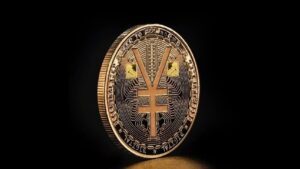
Japanese startup JPYC has launched the world’s first stablecoin pegged to the yen, Reuters reports.
The stablecoin is also called JPYC and can be fully converted into yen. It is backed by internal cash reserves and Japanese government bonds.
The company intends to issue JPYC worth 10 trillion yen ($66 billion) over three years and ensure widespread use of this cryptocurrency abroad.
To stimulate its circulation, JPYC does not plan to charge transaction fees at the initial stage. It will generate income from interest payments on government bonds.
“We hope to stimulate innovation by enabling startups to pay low fees for transactions and settlements,” Chief Executive Officer Noritaka Okabe told reporters.
Blockchain-based stablecoins are usually pegged to fiat currencies, allowing for faster and cheaper payments.
More than 99% of stablecoins in the world are pegged to the US dollar, according to the Bank for International Settlements (BIS).
Nikkei reported in October that Japan’s three largest banks — Mitsubishi UFJ Financial Group, Sumitomo Mitsui Financial Group, and Mizuho Financial Group — would jointly issue their own stablecoins.
In September, nine European banks, including UniCredit and Raiffeisen, announced similar plans.

The US dollar depreciated against the euro, pound sterling, and yen on Friday. The ICE DXY index, which measures the dollar against six currencies (euro, Swiss franc, yen, Canadian dollar, pound sterling, and Swedish krona), is losing 0.06%, while the broader WSJ Dollar Index is down 0.16%.
The day before, the DXY rose by 0.4% on strong data on the dynamics of retail sales in the US for July, which confirmed the stability of the US economy and dispelled fears of a recession, Market Watch writes.
Investors are confident that the Federal Reserve will begin to ease monetary policy in September, as the July inflation report released earlier this week confirmed its continued weakening. The probability that the rate will be lowered by 25 basis points at the September meeting is estimated by the market at 74.5%, according to CME FedWatch. At the same time, expectations that the rate would be cut by 50 bps at the next meeting have declined after the publication of positive statistics.
As of 9:15 a.m. ET, the euro was trading at $1.0986 compared to $1.0971 at the close of the previous session.
The value of the pound sterling against the dollar rose to $1.2883 from $1.2854 the day before.
Traders’ attention is shifting to the annual Jackson Hole Economic Symposium, which traditionally brings together the heads of the world’s leading central banks. This year’s event will be held on August 22-24.
On Friday, the dollar/yen pair is trading at 148.97 yen against 149.3 yen at the close of the previous session. The dollar to offshore yuan exchange rate fell to 7.1768 yuan against 7.1816 yuan the day before.
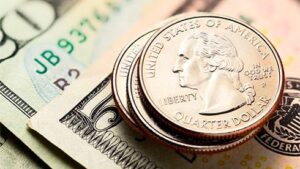
Traders are assessing the minutes of the Federal Reserve (Fed) meeting in May, which showed that a number of U.S. Central Bank executives believe further monetary policy tightening is necessary.
“Some executives noted that another rate hike is likely needed at the next meetings because their projections suggest that the process of moving U.S. inflation toward the Fed’s 2 percent target may remain unacceptably slow,” the minutes said.
At the same time, “several participants of the meeting said that if the situation in the American economy develops in accordance with their expectations, further policy tightening after the May meeting may not be necessary,” the document notes.
Judging by the quotations of futures on the rate level, the chances for the Federal Reserve to increase it by 25 bps in June are estimated by the market at 30%, the probability of raising the rate by the end of July – at 55%, according to the CME Group.
The international rating agency Fitch on Wednesday placed the long-term issuer default rating of the USA “AAA” on the review with the “negative” forecast in connection with the delay of negotiations on the issue of the limit of the country’s borrowings.
The agency’s press release notes that the political bias of the parties involved in discussing the issue is preventing an agreement to raise or suspend the U.S. government debt ceiling, while the deadline for a decision is approaching.
Ironically, this factor is also supporting the dollar as it boosts investor inflows into safe haven assets, Trading Economics noted.
The ICE-calculated index showing the dynamics of the dollar against six currencies (euro, Swiss franc, yen, Canadian dollar, pound sterling and Swedish krona) is adding 0.15%, while the broader WSJ Dollar Index is adding 0.16%.
The euro/dollar pair is trading at $1.0732 as of 9:05 a.m. Moscow time, up from $1.0752 at the close of the previous session.
The pound exchange rate dropped to $1.2343, compared to $1.2465 the day before.
The value of the U.S. currency against the yen is 139.53 yen against 139.48 yen by the end of trading on Wednesday.
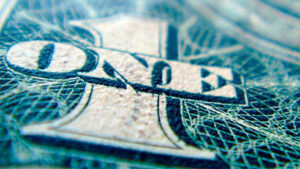
The U.S. dollar is moderately weakening against the euro and the pound, and is rising against the yen in trading on Monday.
The ICE-calculated index showing the dollar’s dynamics against six currencies (euro, Swiss franc, yen, Canadian dollar, pound sterling and Swedish krona) is losing 0.12%, while the broader WSJ Dollar Index is down 0.11%.
The euro/dollar pair is trading at $1.1037 as of 2:50 p.m., up from $1.1018 at the close of the previous session, the euro is strengthening about 0.2%.
The dollar/yen was up 0.2% to 135.17 yen from 134.86 yen in Friday trading.
The pound rose 0.15% to $1.2653 from $1.2633.
Traders’ attention this week is focused on the Bank of England meeting, the results of which will be announced on Thursday. The British Central Bank is expected to raise its benchmark rate by 25 basis points (bps) at its upcoming meeting, to 4.5%.
Last week, the European Central Bank (ECB) and the Federal Reserve (Fed) raised rates by a similar amount.
“The interest rate differential between the eurozone and the U.S. continues to narrow, which reduces pressure on the euro against the dollar,” said Commonwealth Bank of Australia analyst Carol Kong. – We expect that the euro will continue to receive support due to the fact that the market expects rate cuts in the U.S. later this year and new raises from the ECB.
Traders are also waiting for U.S. consumer price data for April, which will be released Wednesday. The consensus analyst forecast, cited by Trading Economics, suggests that inflation in the U.S. last month remained at March’s 5% annualized rate.
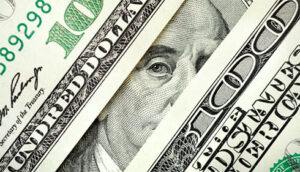
The U.S. dollar is advancing against major world currencies.
Including the yen fell against the U.S. national currency to its lowest in six weeks on expectations of further interest rate hikes by the Federal Reserve, Trading Economics said.
Meanwhile, the new head of the Bank of Japan Kazuo Ueda said on Monday that the soft monetary policy will remain in force for the time being. Meanwhile, he expects the growth rate of consumer prices to start slowing down soon.
Ueda’s first meeting as the head of the Japanese Central Bank will take place at the end of this week. Following its results the bank will publish an updated economic forecast.
The Euro is trading in the morning at $1.0977 against $1.0992 at the end of the last session.
The value of the single European currency is now around 147.42 yen compared to 147.44 yen on Friday. The dollar exchange rate is 134.30 yen against 134.14 yen at the end of the previous trading day.
The DXY index, which shows the value of the U.S. dollar against six major world currencies, is up 0.04% in trading. The WSJ Dollar, which tracks the movement of the dollar against 16 currencies, rose 0.13%.
The pound is trading at $1.2426 compared to $1.2440 on the previous trading day. The euro is at 0.8836 against 0.8834 a day earlier.
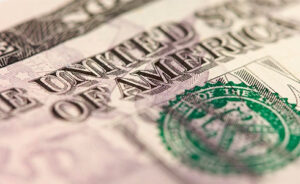
The U.S. dollar is strengthening against the euro, yen and pound sterling in trading on Tuesday on expectations that an unexpected decision by several OPEC+ states to cut production will prolong a period of high inflation in the world and delay the end of the cycle of monetary tightening by global central banks.
Such a decision could make it “a little more difficult” for the Federal Reserve (Fed) to deal with high inflation, said James Bullard, president of the Federal Reserve Bank (FRB) of St. Louis.
“This decision by oil-producing countries was unexpected, but whether it will have long-term consequences is an open question,” Bullard said in an interview with Bloomberg on Monday. – Oil prices fluctuate all the time, and it’s hard to track them accurately. Their rise will affect the rate of inflation and make our job a little more difficult.”
According to Bullard, the Fed’s benchmark interest rate, currently at 4.75-5%, should be raised to 5.5-5.75%.
The ICE-calculated index, which shows the dollar’s performance against six currencies (euro, Swiss franc, yen, Canadian dollar, pound sterling and Swedish krona), added 0.11% during Tuesday’s trading, while the broader WSJ Dollar Index added 0.15%.
The euro/dollar pair is trading at $1.0893 as of 9:20 a.m., up from $1.0905 at Monday’s market close.
The pound/dollar exchange rate is at $1.2407, compared to $1.2417 the day before.
The value of the U.S. currency in a pair with the yen increased to 132.76 yen against 132.42 yen at the end of the previous session.
The Australian dollar weakened to $0.6755 from $0.6786 a day earlier following the Reserve Bank of Australia’s (RBA) decision to halt the key interest rate hike.
The RBA kept Tuesday’s rate at 3.6 percent a year, its lowest since May 2012. The rate has been cumulatively raised by 350 bps since last May.
RBA governor Philip Lowe, however, warned that the central bank is ready to resume raising the rate if necessary.
“The RBA Board of Governors believes that further monetary policy tightening may be necessary to return inflation to the central bank’s target,” Lowe said in a statement posted on the RBA website. – Today’s decision to maintain the same rate level gives us time to assess the health of the economy and its prospects amid serious uncertainty.”